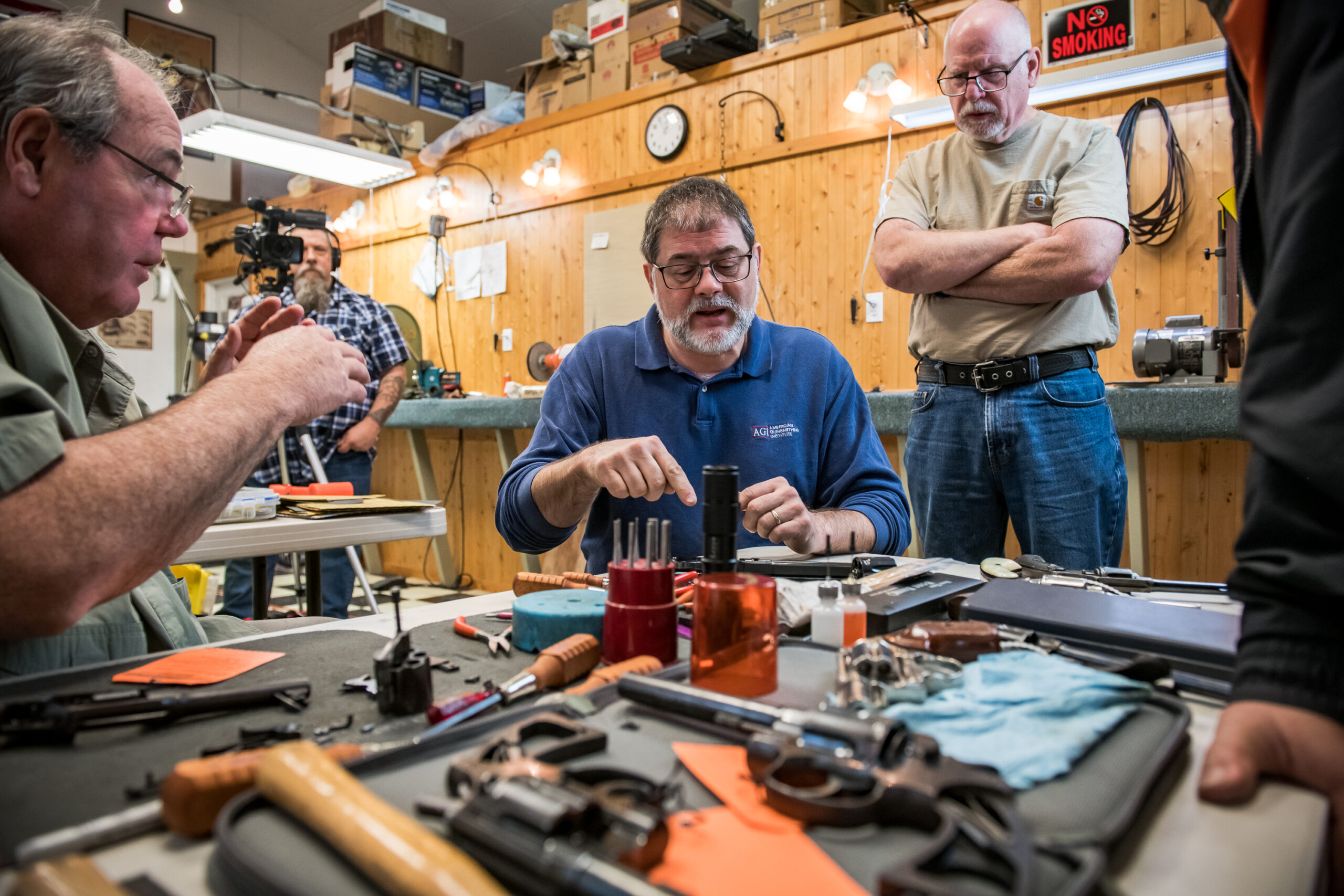Contact a Student Advisor: 1 (800) 797-0867
With the recent devastation caused by Hurricanes Helene and Milton, many homes and shops across the country have been flooded, leaving numerous firearms in need of immediate rescue and preservation. As gun owners, it’s crucial to know how to protect and restore your valuable firearms after such catastrophic events.
In this article—and the video above—I will guide you through the essential steps to “triage” your firearms and detail the necessary actions to clean and preserve them after exposure to floodwaters.
Why Immediate Action Is Crucial
Floodwaters from hurricanes often contain a harmful mix of silt, chemicals, and waste. When firearms are submerged in this contaminated water, they are at high risk of corrosion and damage. Immediate action can prevent long-term deterioration and help preserve both the functionality and value of your firearms.
The 3 Main Steps to Save Your Firearms
- Triage
- Deep Cleaning
- Restoration
This article will primarily focus on the triage process, which is the most time-sensitive.
Step 1: Triage
Safety First
- Ensure Safety of the Area: Only retrieve your firearms when it’s safe to enter the affected area. Be cautious of environmental hazards like structural damage, contaminated water, or electrical risks.
- Assume Firearms Are Loaded: Always treat every firearm as if it’s loaded. Carefully check and clear each one according to proper safety procedures.
Document the Damage
- Take Photos: Photograph the firearms in the condition you found them. These images are invaluable for insurance claims and for assessing the extent of damage during restoration.
Initial Assessment and Actions
- Remove from Cases: Firearms stored in bags or cases should be removed immediately. These containers trap moisture and contaminants, accelerating corrosion.
- Discard Damaged Cases: Wet cases and bags are difficult to clean thoroughly and often need to be discarded.
- Separate Wood Components: Remove wooden stocks and grips to prevent warping and discoloration. Detach hardware like screws, sling swivels, and recoil pads.
- Dry Slowly: Wipe down wooden parts and allow them to air dry slowly to minimize cracking or warping.
Prioritize Your Firearms
Focus on the most valuable or sentimental firearms first. High-end or heirloom pieces may require more immediate attention to prevent irreversible damage.
Displace Moisture from Metal Parts
- Use a Water-Displacing Agent: Spray the metal components with a water-displacing oil. While WD-40 can be used in a pinch, it’s better to use specialized gun oils like Break Free, CorrosionX, or Ballistol.
- Ballistol is particularly effective as it’s safe for metal, wood, and leather.
- Field Strip the Firearm: Disassemble the firearm as much as possible without tools to access internal areas.
- Blow Out Moisture: Use compressed air to remove moisture from crevices, paying special attention to extractor holes and recessed areas.
- Swab the Bore: Run a lightly oiled patch through the barrel to prevent rust.
Step 2: Deep Cleaning
Once the immediate risks are mitigated, you can proceed to a thorough cleaning when conditions allow.
- Detail Strip the Firearm: Completely disassemble the firearm down to individual components.
- Clean Each Part: Use a mild detergent like Simple Green with water and a brush to scrub away all contaminants.
- Dry Completely: Ensure all parts are thoroughly dried to prevent rust.
- Lubricate and Protect: Apply a high-quality gun oil to all metal surfaces.
- Reassemble: Put the firearm back together carefully, ensuring all parts are properly installed.
Step 3: Restoration
For firearms that have suffered significant damage:
- Assess the Need for Professional Help: Some restorations may require the expertise of a professional gunsmith.
- Consider AGI Courses: If you’re interested in learning how to restore firearms yourself, the American Gunsmithing Institute (AGI) offers comprehensive courses to guide you through the process.
Every Firearm Represents Freedom
Firearms often hold significant monetary and sentimental value. They may be collectibles, family heirlooms, or part of your personal history. Taking the time to properly care for them after a disaster preserves this legacy.
Be Prepared for the Future
Natural disasters like Hurricanes Helene and Milton remind us of the importance of preparedness. Consider:
- Creating an Emergency Plan: Have a strategy in place for quickly securing your firearms in the event of a storm.
- Investing in Protective Storage: Waterproof and fire-resistant safes can offer additional protection.
- Educating Yourself: Knowledge is power. Understanding how to maintain and restore your firearms is invaluable.
Learn More with AGI
If you’re not familiar with the detailed process of firearm disassembly and restoration, AGI offers Armorer’s Courses for a wide range of firearms. These courses teach you:
- How to detail strip your firearm.
- The internal design and function of your firearm.
- Maintenance and restoration techniques.
Explore over 66 different Armorer’s Courses covering major models at www.AmericanGunsmith.com.
Be a Hero and Save a Gun!
By acting swiftly and following these steps, you can save your firearms from permanent damage. Share this knowledge with fellow gun owners to help preserve our shared heritage.
Gene Kelly,
Gunsmith and President, AGI
Ready to Become a Certified Professional Gunsmith?
Call us at 1-800-797-0867 to speak to a Student Advisor.
Or Enroll Today and turn your passion into a profession with the American Gunsmithing Institute.








